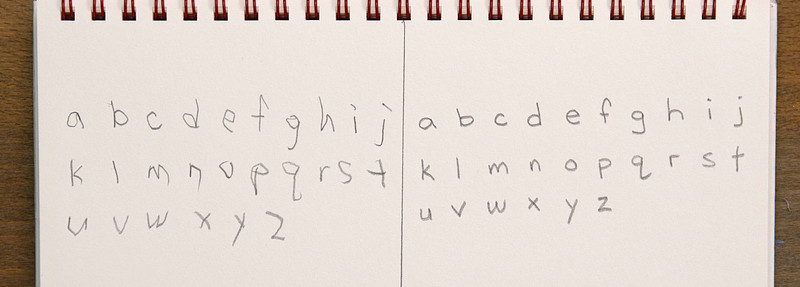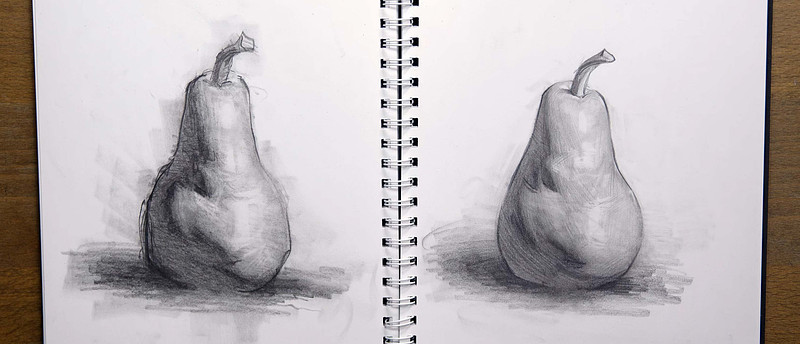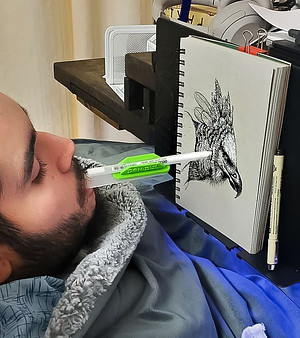Hey guys, my name is Stan Prokopenko, and this is the beginning of my Drawing Basics course.
I think that anyone can learn how to draw, just like anyone can learn how to speak. Two-year-olds learn how to speak a language and drawing is a visual language. If you learn the vocabulary and grammar of the visual language, you can communicate with pictures.
I think you’ll find this course refreshingly simple, fun, and enlightening! You’ll learn the most important fundamental concepts for drawing anything and soon you’ll be able to draw pictures out of your imagination or from reference. There are no prerequisites...this course IS the prerequisite.
You don’t need any past experience or fancy drafting tables. All you’ll need is a sketchbook and a pencil. Later in this course, we’ll play around with some markers, ink, and maybe some charcoal to change things up, but that will be optional. You can do the whole course with just paper and pencil.
Am I too old? Am I not talented? Short answer, no. Of course not. Anyone can learn to draw. What separates good and bad artists is simply how much time they’ve spent drawing. So, let’s take a look at what’s really required to be a great artist.
If you can write the alphabet, you have enough hand-eye coordination to draw a masterpiece. Tight, complicated little letters require hand-eye coordination. You can see my left-handed alphabet looks pretty terrible, but the difference between my right-handed drawing and left-handed drawing isn’t as big.
My left-handed drawing is a bit wobbly, and the strokes aren’t as pretty… But it still has all the same elements and the same fundamental understanding of what it takes to make a good drawing. It looks 3 dimensional, it’s just messier. Which some people might even prefer!
So learning to draw isn’t just about training your hand (although that’s part of it), but also training your mind. Understanding perspective and how light affects form so that you can shade properly.
These are things you learn about and then practice to get an intuitive understanding of them.
And equally important, personal choices like composition and storytelling. These are what make an artist an artist. There are great artists with arthritis or severe vision problems who power through or work around the limits of their bodies and do good work.
Don't forget what our homie Michelangelo said, “The artist paints with his head, not his hands.” And boy does Mouth Ninja prove him right.
So as a beginner, you’ll need to work on the physical and intellectual aspects of drawing.
The physical is training your mind to have subtle control of your body and execute any type of stroke with confidence. The reason you can write the alphabet effortlessly is that you’ve been practicing that your whole life. The physical aspect is also training your eyes to properly see proportions, values, colors, and edges.
This will take many years of practice. It’s similar to learning a sport. Draw things around you and draw a lot. Training your eyes and hand is about repetition. It's about physically doing it, a bunch of times. Constantly analyzing what you’re looking at and trying to put it down on paper. When you can’t figure out how to draw something or why your drawing doesn’t look like what you imagined, it’s because of gaps in your knowledge. That’s where the intellectual side comes in.
Some of the Concepts We Will Study
- 3D Form
- How light affects form
- Designing interesting shapes
- Creating the illusion of depth with Values, and Edges
- 1-2-3 Point Perspective
- Intuitive Perspective
- Gesture
- Line Quality
- Observational Drawing
- Drawing from Imagination
- Silhouettes
- Shading
- and more…There’s a lot to learn.
The intellectual aspect is the science of how we see the world. That’s the visual language, and you’ll learn it in this course. But every time you learn a new concept it’s exciting because it’s a chance to get better! If you're not already enrolled, you can get the premium course here. That's the way to get all the lessons, projects, demonstrations, and critique videos. It’ll be worth it and it'll set you up with a strong foundation for your path to drawing mastery.
If you have images in your mind but you just can’t get them on paper, it means that you’re still missing physical skills or intellectual knowledge. That’s why creativity isn’t the only part of being an artist. Just ‘because you can imagine it, doesn’t mean you can execute it. To get it out of your head and on paper, you need to spend time practicing the fundamentals of drawing to learn the craft.
It’s frustrating, but patience is very important. Learn to love the process, not the result. The results will be rewarding, and the rewards will happen many times throughout the process, not at just some mysterious endpoint when you’re suddenly a master. Don't focus on the end. Focus on now. Enjoy the moment and the act of drawing. To me, drawing has always been a form of meditation. It’s a chance to slow down.
The thing about learning to draw is that it takes time. As a general rule, the more you draw, the quicker you’ll improve. But no matter how often you draw, it’s still going to be years before you reach a professional level. So if you really want to get good at drawing, remember, you’re in this for the long haul. Pace yourself. Enjoy the journey. Make drawing a relaxing and happy space for yourself, and I think you’ll naturally find yourself drawing more often. MAKE IT FUN! If you find yourself dreading the practice time, something needs to change, or you risk burning out.
So, we’re gonna get started now. I hope you will join us. If you’re really serious, check out the premium course. I’ll show you effective warm-up exercises that I do before a drawing session, you’ll get exclusive lessons with all the foundational knowledge, and I’ll walk you through the projects for each lesson. So, if you’re stuck on your project, you’ll be able to watch my demos, see how I did it, and follow along.
If you’re just here for the free stuff, that’s cool too. As always, I’ll continue to release a portion of the lessons for free.
Check out some of the fundamental lessons I’ve already released before. And of course, there is the Draftsmen Podcast with over 100 episodes of advice for art students. We’ve covered pretty much any issue you might run into. Draftsmen is a good podcast to listen to while you’re drawing or driving. Alright guys, Let’s do it!
Check out these fundamental lessons I’ve already released
The Basic Elements – Shape, Value, Color, Edge
Shading Light and Form – Basics
How to Shade a Drawing
How to Draw Gesture
Structure Basics – Making Things Look 3D
Drawing Measuring Techniques
The Illusion of Depth – Contrast, Aerial Perspective and Form
The Illusion of Depth – Perspective, Details and Overlapping Forms
The Illusion of Depth – Edge, Line, Cast Shadow and Paint Thickness
Top 5 Shading Mistakes
Top 5 Drawing Mistakes





















